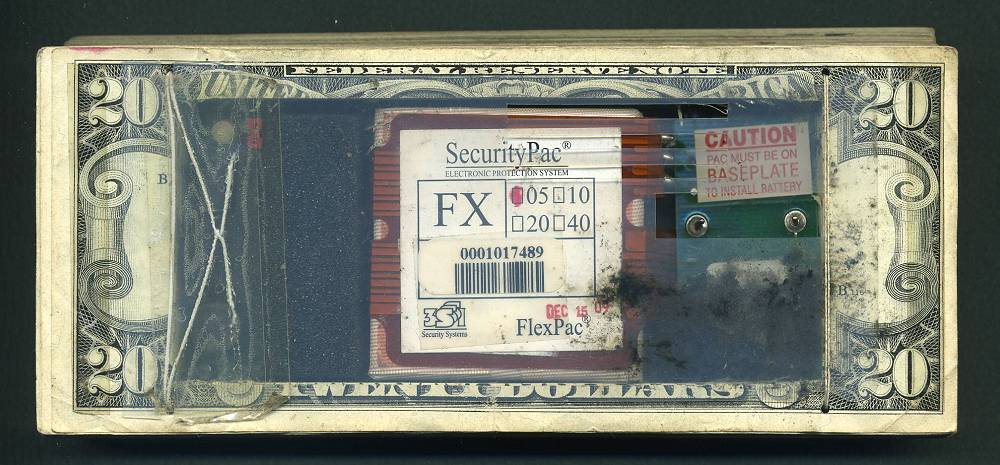

Two signatures were those of the Register of the Treasury and Treasurer of the United States and were printed as part of the note's design. Large size notes also bore four signatures.
FEDERAL BANK NOTE SERIAL NUMBER
The bank serial number indicated the number of notes of that series and denomination issued only by that bank. The Treasury serial number indicated the total number of notes of that series and denomination issued by all banks. Large-size notes bore two serial numbers. The historical figures seen on these notes usually were different from those on the same denominations of paper currency today. One design used for many years featured a portrait on the obverse, near the left edge, and the bank's name printed in prominent shaded type in the middle. Through much of their earlier history of issue, national banknotes used designs in which the issuing bank's name was prominently displayed, rather than "The United States Of America". Low serial-numbered notes were often withdrawn as souvenirs by the bank officers who signed them.Įxcept for the last few years of issue, all of the National Bank Notes were large-sized. Bonds eligible as collateral for posting to the Treasury were said to have the "circulation privilege" and the interest they bore provided seigniorage to the National Banks.Įach National Bank Note bore the issuing bank's national charter number as well as the serial number assigned to the note by that bank. The program was a form of monetization of the Federal debt.

The federal government would back the value of the notes-the issuance of which created a demand for the government bonds needed to back them. The banks then could issue banknotes worth up to 90 percent of the value of the bonds. Banks with a federal charter would deposit bonds in the US Treasury. A 2 percent tax on state bank notes was authorized in 1864 to speed conversion to the new system, only to be increased the next year to 10 percent, then 20 percent.įrom 1863 to 1935, National Bank Notes were issued by banks throughout the country and in US territories. The chartering of banks and administrative control over the issuance of National Bank Notes were the responsibility of the Office of the Comptroller of the Currency. During the Civil War, in 1863, the National Banking Act established a system of National Banks which were empowered to issue National Bank Notes subject to federal oversight.

Privately issued banknotes were nominally backed by specie ( hard money) or financial securities held by the banks but oversight of issuing banks often was lax and encouraged wildcat banking, in which fraudulent institutions issued worthless banknotes. Prior to the American Civil War, state banks and chartered private banks issued their own banknotes.

The vignette at left shows Benjamin Franklin conducting the famous Kite experiment. The first $10 National Bank Note issued by The First National Bank of Hawaii at Honolulu, Territory of Hawaii (1900), signed by Cecil Brown (President) and W.G.


 0 kommentar(er)
0 kommentar(er)
